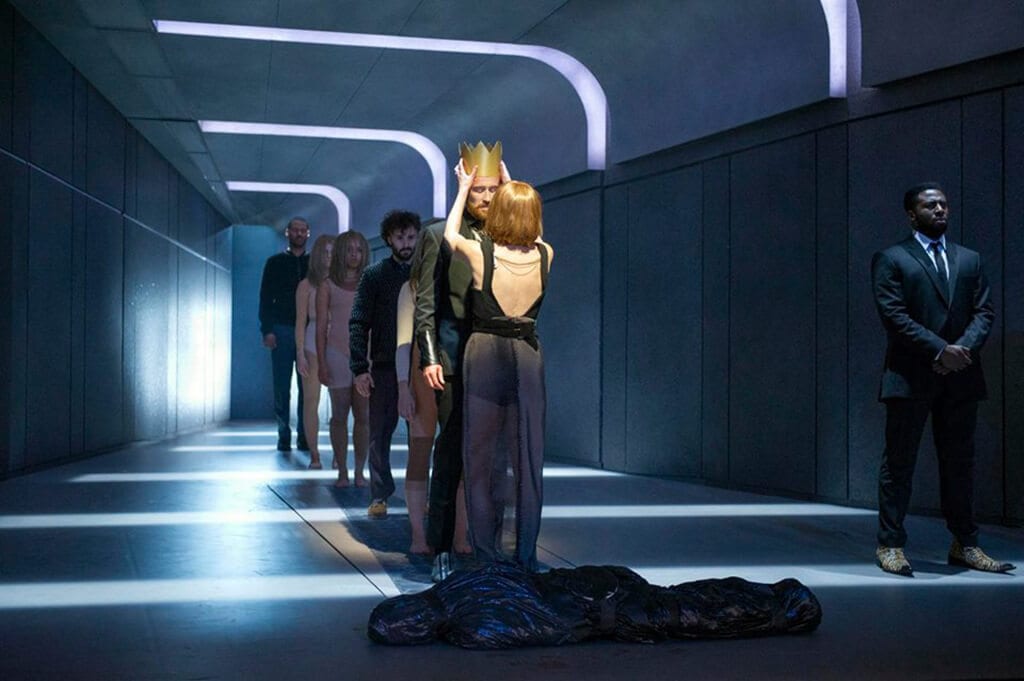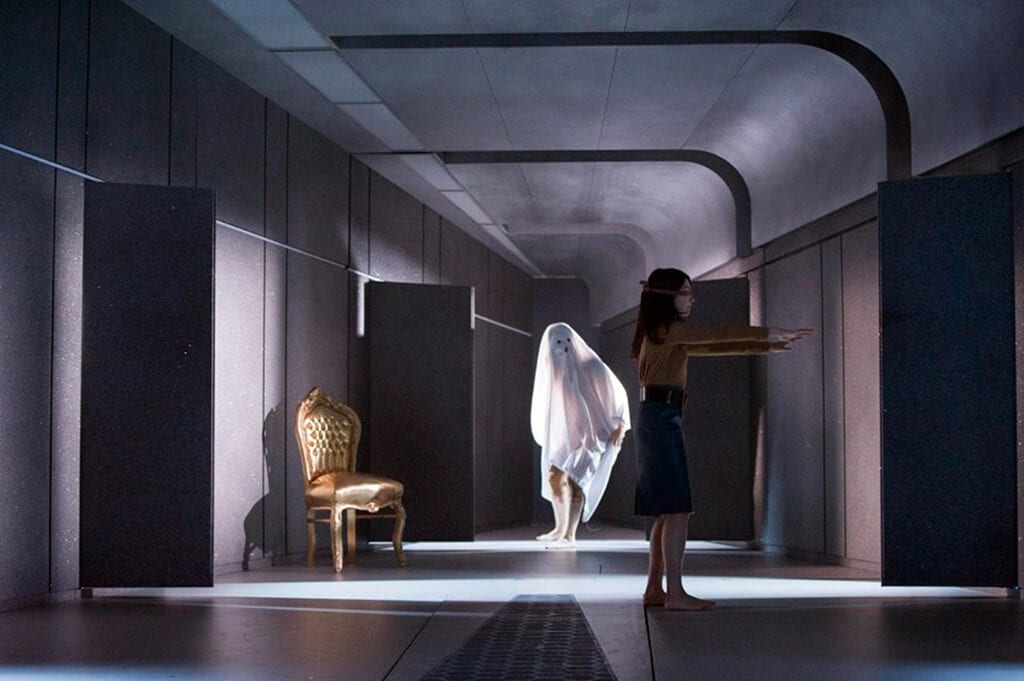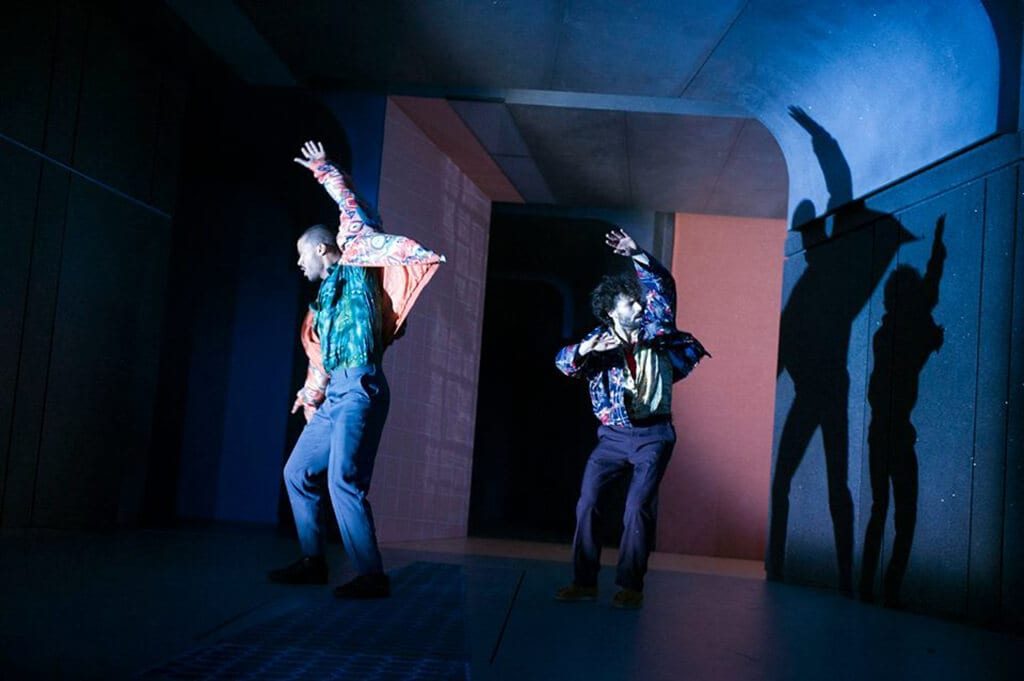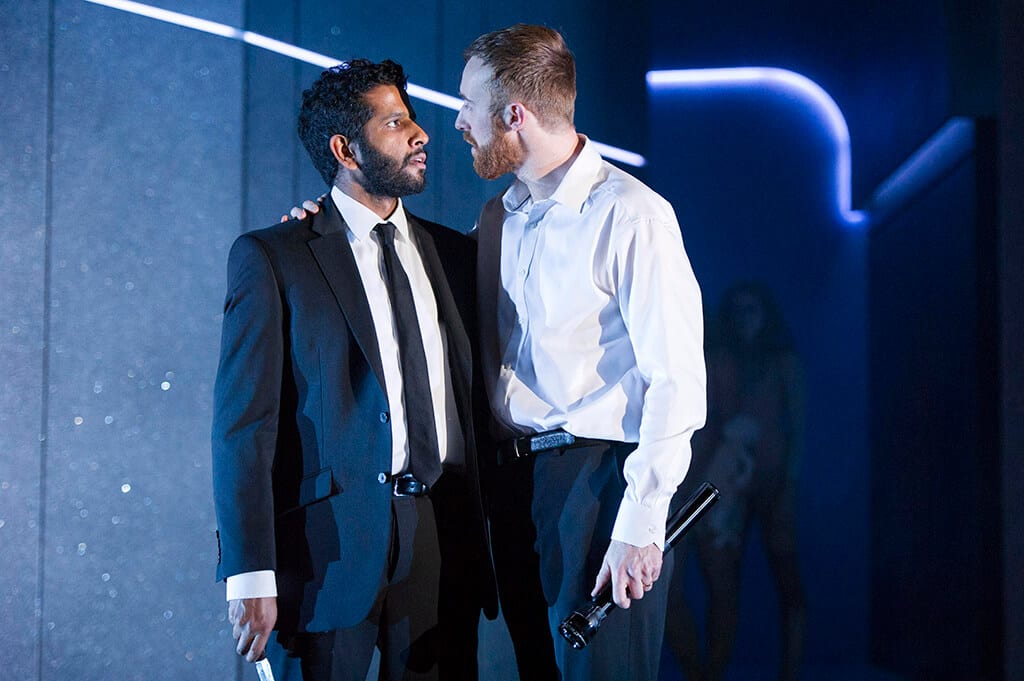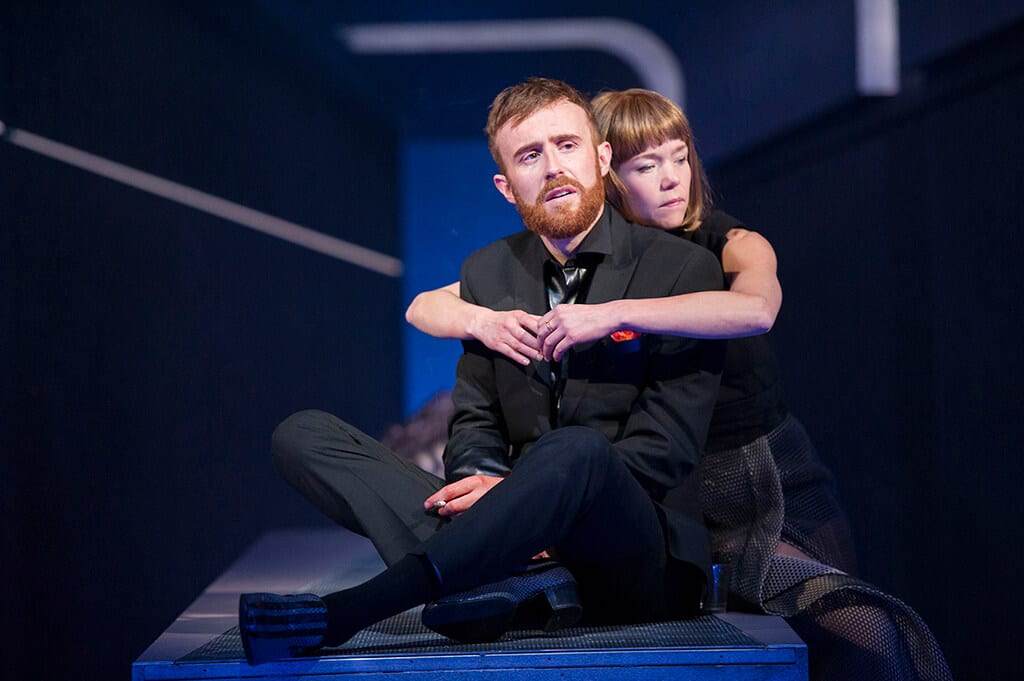We regularly hear of radical reinterpretations of Shakespeare classics. Perhaps we will not find such a version that stretches the bard’s work as the Young Vic’s production of Macbeth, currently on a national tour, but visiting the Birmingham Rep this week.
Carrie Cracknell’s collaboration with choreographer, Lucy Guerin, creates a visual-heavy production of the Scottish play, which does not hold back on its brutal depictions of Macbeth’s (John Heffernan) rise to power. Just prior to the first terrible act which the protagonist and his wife (Anna Maxwell Martin) commit, we can see the villains partying in hedonistic fashion alongside the guests to whom they play host. The brashness of the body-bags which litter the stage as even more enemies of the future King are held under hoods of polythene emphasis the sheer visceral quality of the play.
Macbeth retains particularly prevalence to our modern times when we consider the rise of Macbeth as a dictator, the political killings he demands, and perhaps even his internal collapse. However, the integration of the drama alongside the dance at times failed to conjure this in its entirety. Whilst impressive routines, Guerin’s choreography often felt disjointed from the overall narrative arch; although, at moments – the visualisation of the moving of the woods whilst Macbeth and the ghost of Banquo (Prasanna Puwanarajah) depicted the final moments before the plays conclusion – the stylised movement worked excellently with the text.
John Hefferman’s Macbeth was emotional and raw, ever more destructive as the play continued, yet tormenting by his crimes. As Lady Macbeth, Anna Maxwell Martin was the scheming foil of the King, superbly slithering around the stage. At times she rushed through her soliloquy’s, but was not helped by script cuts which limited the extent to which she was able to explore her own torment.
Banquo was expertly depicted by Prasanna Puwanarajah, who thanfully returned from the dead in a haunting stylised sequence towards the end of the play. His voice resonated and provided a strong contrast to the more conflicting Macbeth. The Three Witches (Ana Beatriz Meireles, Jessie Oshodi and Clemmie Sveaas) acted as omnipresent spectres, combining with Clark’s music to deliver the choreography with poignancy.
Whilst an adventurously visual production, this version of Macbeth does sacrifice some of the best parts of the play in favour of disjointed movement sequences. Lizzie Clachan’s set design is bold and exciting, but with more appropriate cohesion between text and movement, this version of Macbeth could have been a great, rather than good, version.

